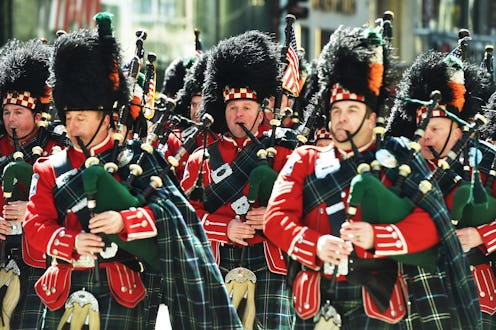Life
Here's Why We Celebrate St. Patrick's Day

St. Patrick's Day is one of those days that most people can't pinpoint on a calendar, and it's also one of those days that we celebrate without really knowing why, exactly. If you're one of those people, worry not, because I have the answer to two very important St. Patrick's Day questions: when is St. Patrick's Day, and why do we care? Yup, it's a two-for-one type of deal with this read.
First things first, mark your calendar for March 17, because St. Patrick's Day always falls on that date (it's not one of those "third Monday of the month" or "first Thursday of the season" type situations... and thank goodness for that, because Thanksgiving and Presidents' Day are already hard enough to figure out). The pros of this constant date? It's easier to remember. The cons of this constant date? Sometimes you're celebrating mid-week, and you're not getting the day off from work. Eh, you win some, you lose some.
Now that you know the date, and you probably already know what to wear (all green everything) and what to do (grab a Guinness), it's time to figure out why exactly you're doing all of this in the first place. Let's take a nice little stroll down Ireland's memory lane, shall we?
The Death Of St. Patrick
March 17 is believed to be the date of St. Patrick's death, which immediately brings up the question: who is St. Patrick? As a fifth century missionary, most of what we know about St. Patrick can be learned from reading the Declaration, which is believed to have been written by the man himself. To sum it all up, St. Patrick was kidnapped at a young age by Irish raiders and forced to work as a shepherd for six years in Ireland. In the process of all of this, he "found God" and was told by the spirit to flee to the coast, where a boat would be waiting to take him back home.
The Arrival Of Christianity In Ireland
St. Patrick's Day also celebrates the conversion of the Irish from a pagan community into a Christian one when St. Patrick returned to Ireland many years after his kidnapping to serve as a missionary to the country. This is where the story of St. Patrick "driving snakes from Ireland" comes from, as an allegoric sort of tale that denotes the arrival of Christianity in Ireland and the ending of paganism.
The Shamrock
So what does any of this have to do with wearing green and rocking the shamrock on March 17? It's believed that St. Patrick used the three-leaf shamrock to help explain the idea of the trinity (an important belief of Christianity) to the Irish. As for the green, this color has been associated with Ireland since the 1600s when the Irish Catholic Confederation utilized a green harp flag, and it's just managed to stick ever since.
What About The Beer?
As for the drinking that has become associated with this holiday? You can thank the fact that the restrictions of Lent are lifted for the holiday, which often led to excessive imbibing during celebrations. Yes, even all of the booze has a religious connection. Who would have thought it?
Images: Nicholas Hunt/Getty Images, Carl Court/Getty Images, Lisa Maree Williams/Getty Images, Stephen Chernin/Getty Images, Sean Gallup/Getty Images